SPDR® S&P Retail ETF
Latest SPDR® S&P Retail ETF News and Updates

The Economic Indicators Covered by the Fed’s Beige Book
Comparing the economic performance with economic expectations and the previous cycles gives investors an idea of whether the economy is expanding or contracting.
This ISM Index Hit a Lifetime High in October
For October, service sector activity rose at a pace not seen since the inception of the report. The non-manufacturing index reached a lifetime high of 60.1.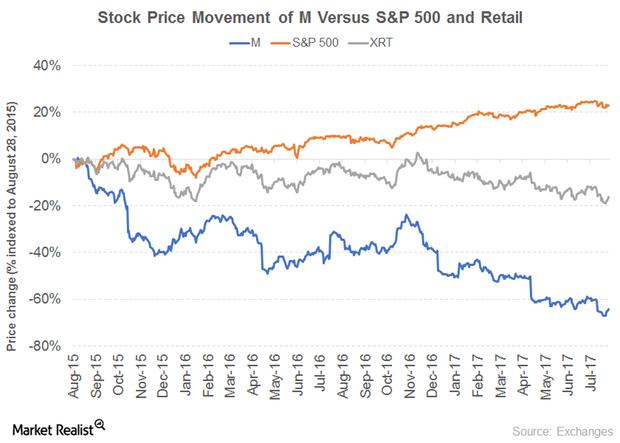
What’s behind Macy’s Rising Dividend Yield
The story behind Macy’s attractive yield Macy’s (M) operates Macy’s and Bloomingdale’s stores. The company’s sales fell between 2013 and 2016. Revenue fell 5% in 2016, compared with 4% in 2015. Online shopping and discount stores have wreaked havoc on brick-and-mortar stores, leading to store closures. Narrowing gross margins and rising impairments, store closing costs, and […]
This Is Why the US Dollar Could Slide Further
US Dollar index reaches a 14-month low The US Dollar Index (UUP) continued with its fall as investors preferred major peers. In the week ended July 21, the US Dollar Index closed at 93.78, falling 1.7% from the week prior. It is headed for its fifth consecutive month of loss this year. Conflicting news from […]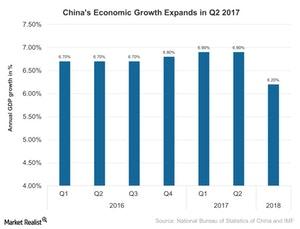
China’s GDP Growth Surprises the Market Once Again in 2Q17
China’s economy surprised the markets when it rose 6.9% year-over-year (or YoY) in 2Q17. This rise was the economy’s biggest in the last six consecutive quarters.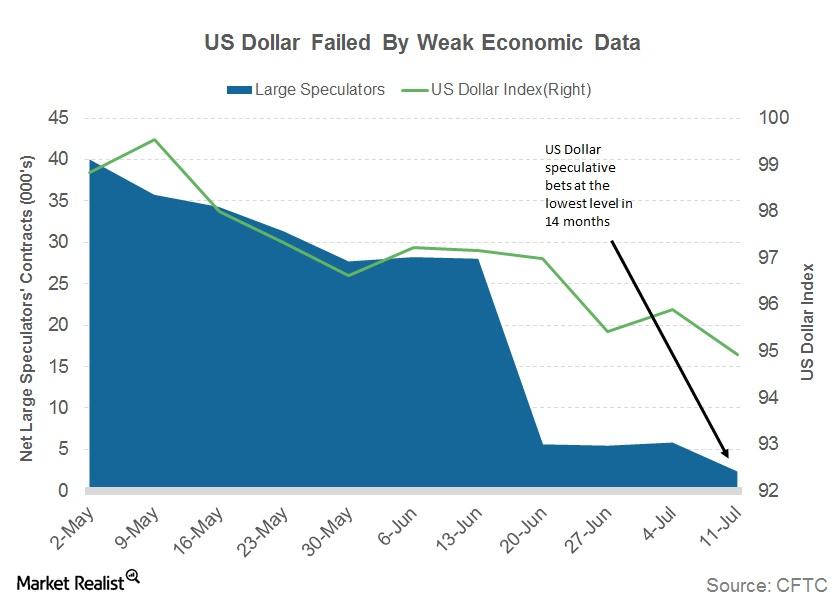
Have Yellen and US Economy Failed the US Dollar?
The US Dollar Index (UUP) closed at 94.9, depreciating by 0.90% last week.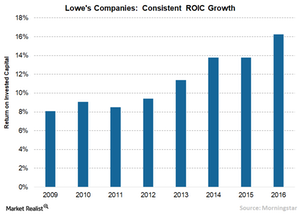
Lowe’s: Great Business Built on Logistics Strength
Lowe’s Companies (LOW) operates 2,129 home improvement and hardware stores in the United States, Canada, and Mexico.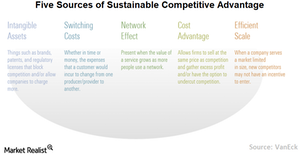
How Intangible Assets Create Value
Intangible assets are nonphysical and nonmonetary in nature, which makes it hard to measure and manage them. They can be worth more to a company than tangible assets.
Dollar General’s Supply Chain and Distribution Model
Dollar General (DG) must maintain an efficient supply chain in order to juggle hundreds of products in over 13,000 stores in 44 states across the United States.
Understanding the US Dollar Store Industry
Dollar stores follow a small-box format to maintain low costs. Target customers are typically lower- and middle-income families.
Dollar General: Why Small-Format Stores Are Key
Dollar General (DG) operates dollar stores that offer a variety of inexpensive merchandise, including home products, seasonal products, consumables, and apparel.
Looking Back: What Drove Target’s Top Line in 2Q16?
In 2Q16, mass merchandiser Target (TGT) reported a 7.2% decline in its top line to $16.2 billion. Target’s 2Q16 revenues were affected by lower traffic and higher variability in sales patterns.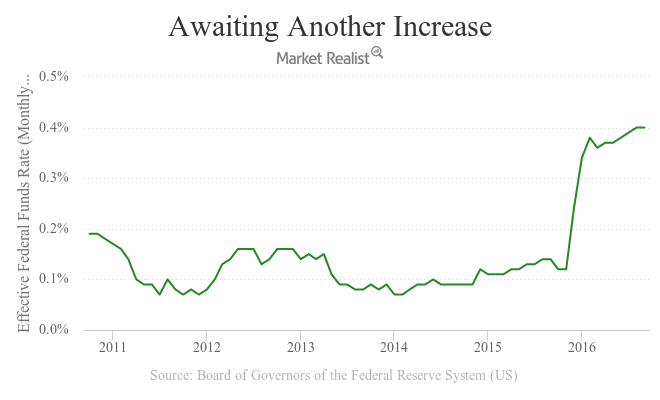
How Delayed Monetary Accommodation Can Cause a Recession
Retracting monetary accommodation on time is crucial as well. This was the chief reason why three dissents took place in the September FOMC.
SuperValu’s Stock Market Performance: A Peer Comparison
SuperValu’s stock is currently trading at $5.36, which is 42% below its 52-week high.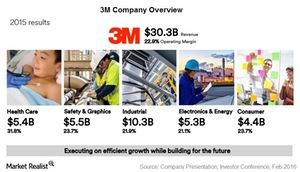
Introducing 3M Company: A Jack of All Trades
Few companies have the kind of ubiquitous presence that 3M Company (MMM) likely does in your everyday life.
What Does a Typical Smart & Final Store Look Like?
Smart & Final stores have a smaller physical footprint than other warehouse clubs and grocery chains, but they offer a larger SKU selection.
What Key Strategies Does Smart & Final Follow?
Let’s discuss Smart & Final Stores’ (SFS) main strategies regarding pricing, private labels, expansion, distribution, and merchandising.
Why Did Deere & Company Consolidate Its Dealer Network?
Despite relying on dealers to sell its iconic tractors for almost a 100 years, Deere & Company (DE) began consolidating its dealer network in the mid-2000s.
Casey’s Strengths, Weaknesses, Opportunities, and Threats
Casey’s has a strong, differentiated, low-risk business model. In fiscal 2015, 82% of its stores were in areas with populations of fewer than 20,000 people.
An Overview of Casey’s Business Strategies
Casey follows both organic and inorganic expansion strategies for its growth. In fiscal 2015, the company opened 45 new stores and acquired 36 stores.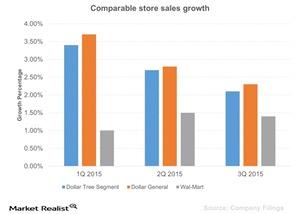
Dollar Tree: A Positive Mix of Organic and Inorganic Growth
Dollar Tree (DLTR) (XRT) (XLY) is pretty consistent for extracting organic growth from its business, seeing growth in the mid-single digits over the years.
Where Is the US Food Retail Industry Headed? A Look at Trends
The US food retail industry comprises of store formats that range from small grocery shops and convenience stores to large supermarkets and club stores.
Strategic Overview: Understanding The Fresh Market’s Strategies
The Fresh Market follows both competitive and differentiated pricing strategies.
How Do The Fresh Market’s Stores Compare with Those of Its Peers?
As of October 25, 2015, The Fresh Market had 180 stores across 27 states.
What Initiatives Is Whole Foods Taking to Stay Competitive?
Whole Foods has developed the 365 format in order to compete with value-based organic food retailers like Trader Joes and mainstream retailers Wal-Mart.
Signet Jewelers’ Ever Us Is Setting Trend for Jewelry Industry
Signet launched a new collection called Ever Us in October 2015. It’s meant to meet the need for jewelry that represents the bond between two people.
A Closer Look at the Highly Competitive Organic Food Industry
With the increasing focus on health and wellness, the organic food channel has grown at more than twice the pace of the conventional food channel.
Sprouts Farmers Market’s Positioning in the US Supermarket Industry
Conventional supermarkets make up 65%, grocery and mass merchandisers make up 25%, and natural and gourmet make up 6% of the supermarket industry’s sales.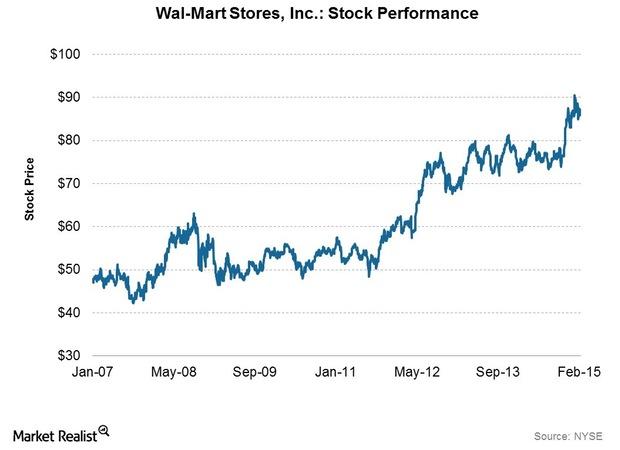
Analyzing Walmart – The World’s Largest Retailer
Walmart (WMT) is a mass merchandiser. It’s the world’s largest retailer. It has over 11,100 stores in ~27 countries. It has a market cap of over $275 billion.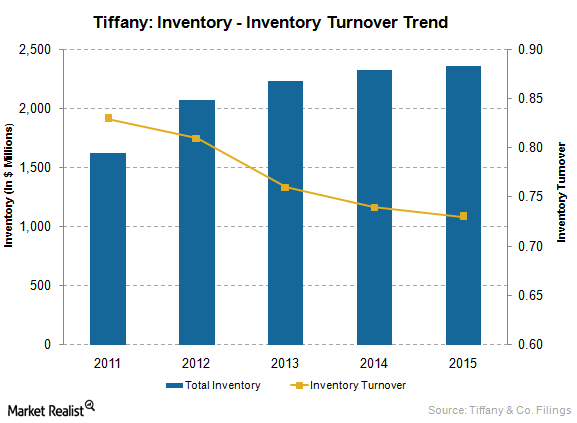
Low Inventory Turnover Is a Concern at Tiffany & Co.
At the end of fiscal 2015, Tiffany had a total inventory of $2.4 billion and inventory turnover of 0.73x, implying potential low sales and excess inventory.
Analyzing Tiffany & Co.’s International Segments
Tiffany & Co. has presences to differing degrees in the Asia-Pacific, Japan, Europe, and Other regions.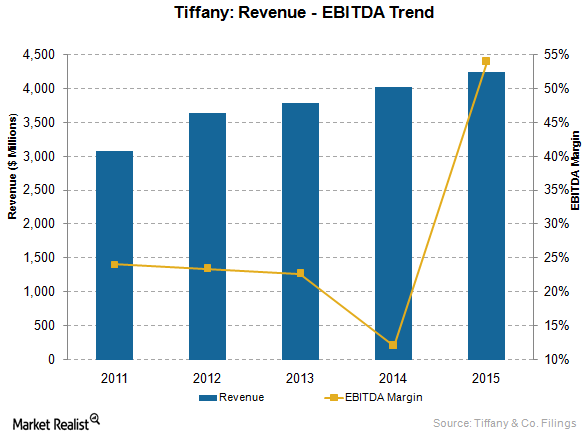
A Must-Know Business Overview of Tiffany & Co.
Tiffany & Co. is a holding company that operates through its subsidiary companies. The most notable is Tiffany & Company, a jeweler and specialty retailer.
Evaluating Signet Jeweler’s Marketing Strategies and Initiatives
Signet Jewelers’ well-known, exclusive brands aim to influence consumers in their buying decisions. Sterling Jewelers thus provides 32% branded assortments.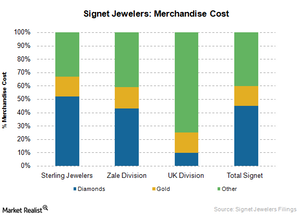
Signet Jewelers’ Aim to Improve Vertical Integration and Supply Chain
Signet aims to advance its vertical integration, including the sourcing and manufacturing of rough diamonds, which should help improve its supply chain.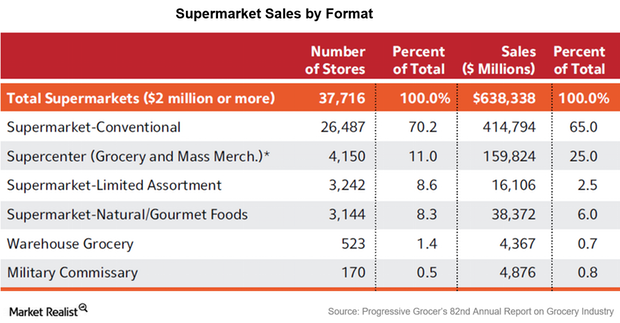
Gauging Whole Foods’ Positioning in the US Organic Food Industry
Organic products are no longer available solely at farmers’ markets and specialty stores but are now available at local and traditional grocery stores.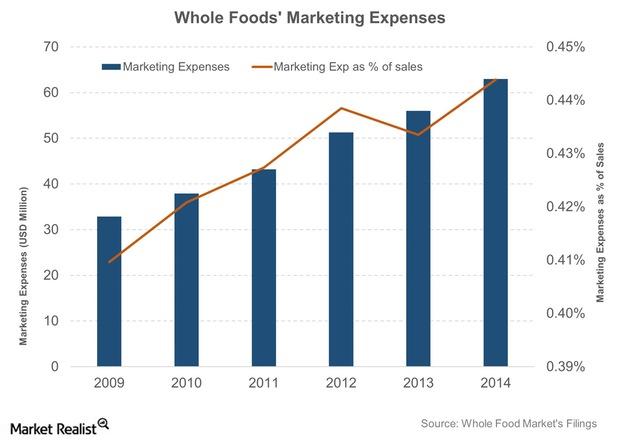
Evaluating Whole Foods’ Marketing and Purchasing Strategies
Whole Foods spends less on advertising and marketing than conventional supermarkets, relying on word-of-mouth recommendations and customer testimonials.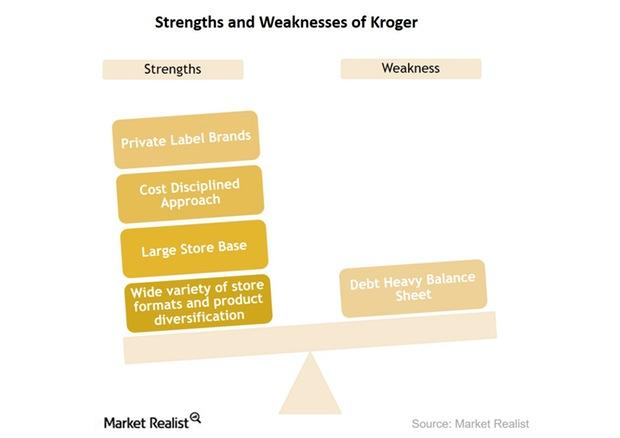
SWOT Analysis: Looking at Kroger’s Strengths and Weaknesses
We will do a SWOT analysis for Kroger (KR) and look at the strengths, weaknesses, opportunities, and threats for the company.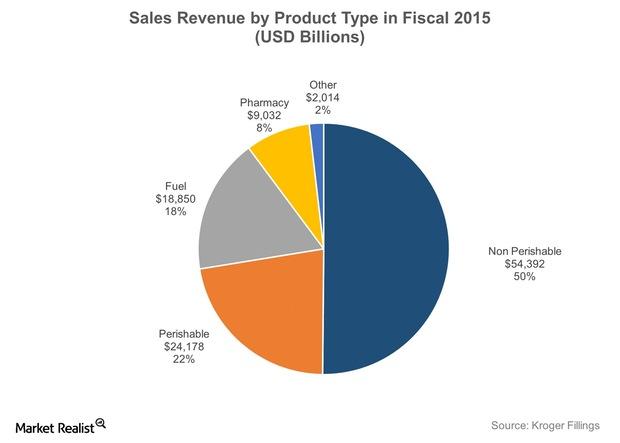
Kroger’s Fiscal 2015 Revenue at an All-Time High
Kroger’s (KR) revenue reached an all-time high of $108 billion in fiscal 2015, which ended January 31, 2015, up by 10.3% from fiscal 2014.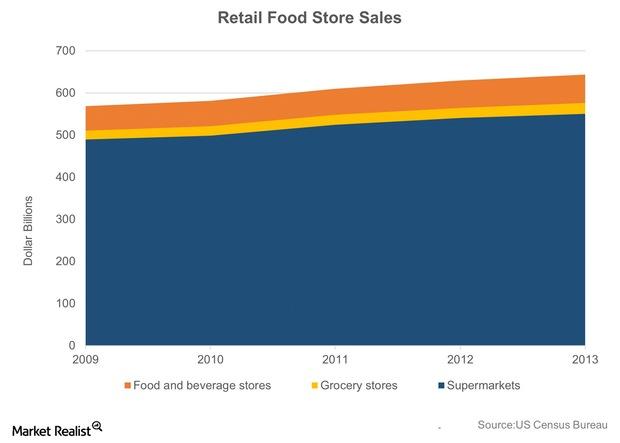
An Analysis of the US Grocery Market
In 2013, grocery stores accounted for 90% of the country’s food and beverage store sales, while supermarkets accounted for 95% of the total grocery store sales.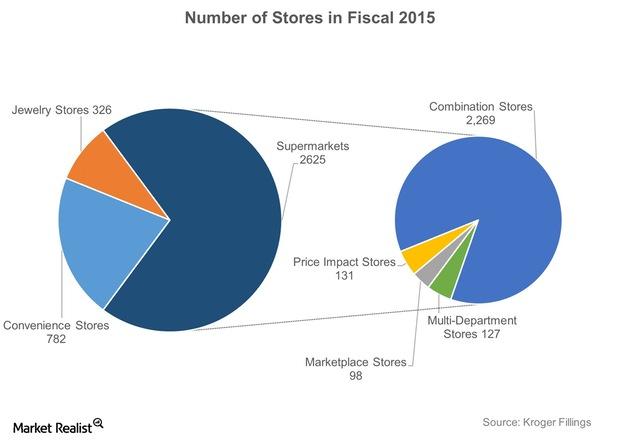
A Look at Supermarkets: Kroger’s Primary Business Segment
The Kroger Co. (KR) is the largest supermarket chain in the US by revenue, operating 2,625 supermarkets at the end of fiscal 2015, which ended January 31, 2015.
Assessing Coty’s Strengths and Opportunities
Coty operates in over 130 countries through key distribution channels in both the prestige and mass markets channels.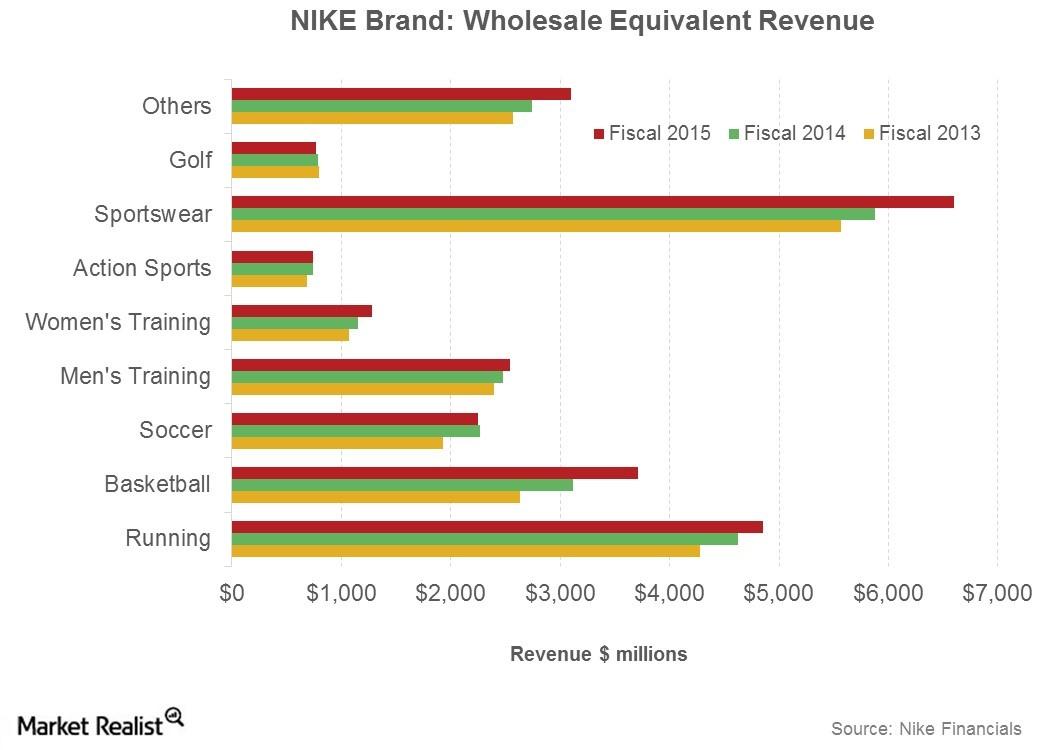
Future Sales Drivers for Nike’s Integrated Marketplace Model
Nike is expecting sales through wholesalers to grow at a mid- to high-single compounded annual growth rate over the next five years through fiscal 2020.
Ross Stores’ Same-Store Sales Growth: A Consistent Track Record
2Q15 marked the 26th consecutive quarter of positive same-store sales growth for Ross Stores. Its last fall in same-store sales growth was in the 4Q08.
Coty’s Marketing Strategies to Reach New Consumers
Coty plans to expand with a multipronged strategy that includes digital marketing efforts through websites, brand sites, social networking campaigns and blogs, and e-commerce.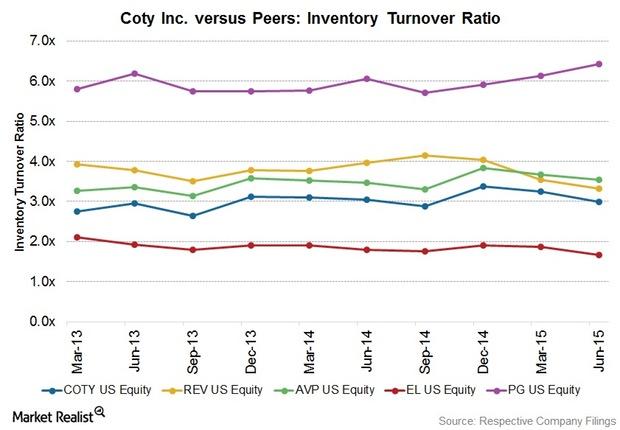
How Coty Is Improving Its Distribution Channels
Coty sells its products through a multichannel distribution strategy across several price points in prestige and mass market channels of distribution.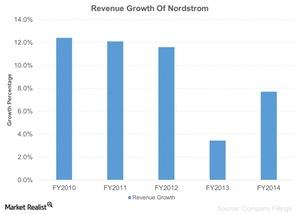
Breaking Down Nordstrom’s Revenue Growth
In the last fiscal year, Nordstrom’s revenue growth was 7.7%, a substantial number when compared to its peers.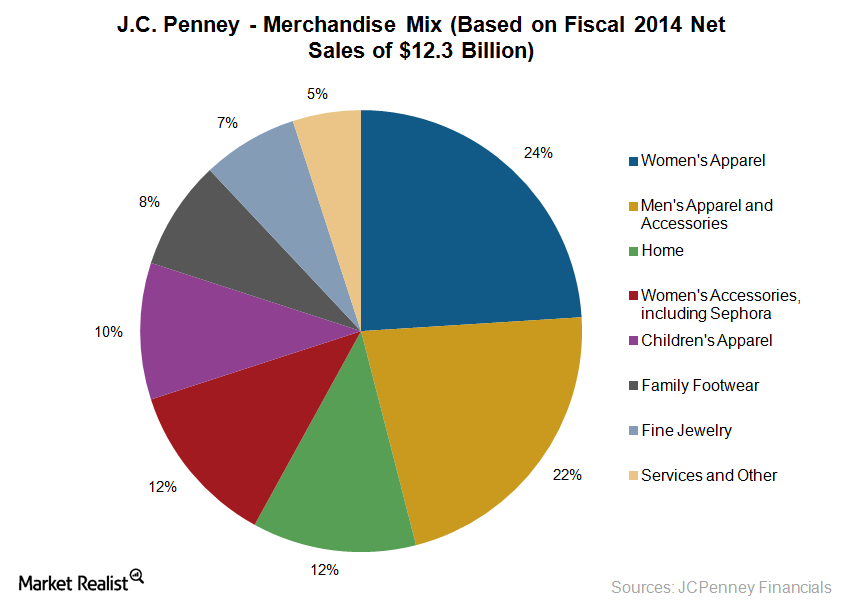
Understanding JCPenney’s Merchandise Mix
JCPenney (JCP) sells merchandise and provides certain services to consumers through its department stores. The company also sells its products through its website at jcpenney.com.
Can Lululemon Keep Seeing Traction in Same-Store Sales?
Lululemon’s same-store sales performance was healthy in 2Q16. There’s been a reversal in the negative trend that dogged the retailer for much of last year, particularly in its brick-and-mortar channel.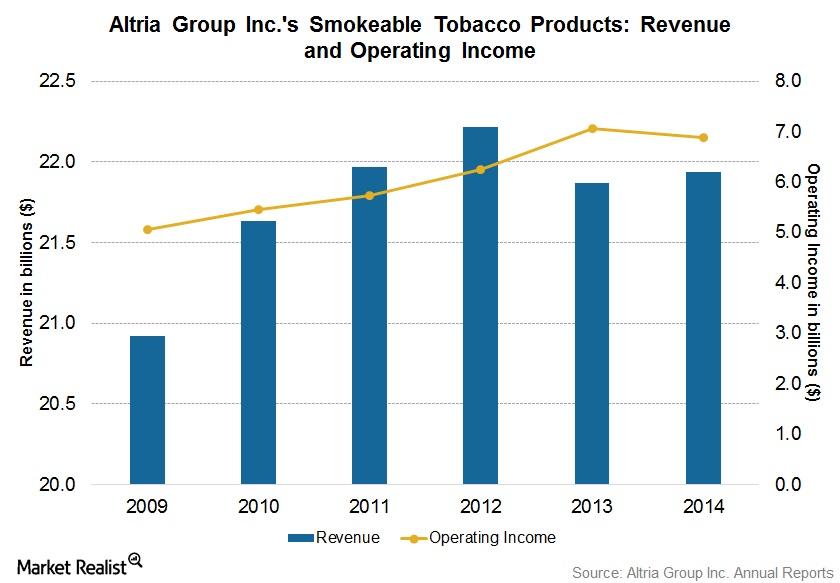
Altria Group’s Smokeable Tobacco Product Segment
MO’s tobacco business segment consists of smokeable and smokeless tobacco products. The company’s smokeable tobacco companies include PM USA and Middleton.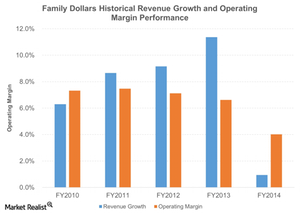
A Glance at Family Dollar’s Historical Performance
Over the last five years, Family Dollar was able to generate a five-year CAGR revenue of 7.2%. That looks decent when you look at it alone. But let’s compare it to its peers.
